#Alexander Henry Rhind
Text
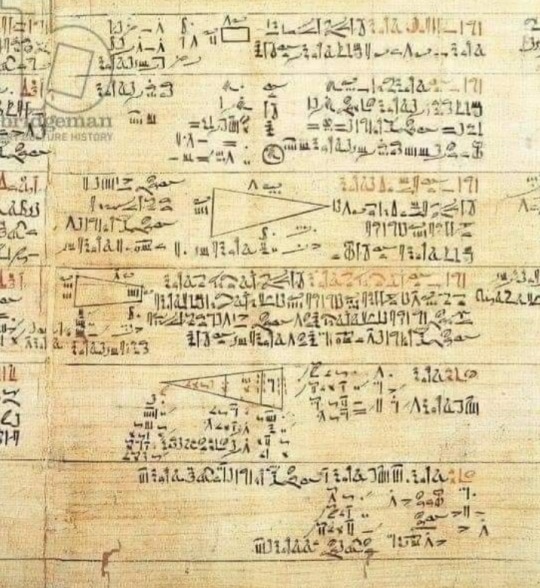
Papyrus of Ahmose or Mathematical Rhind (1500 BC / 1550 BC) is the oldest manuscript written in Algebra and Trigonometry.
Manuscript shows that Egyptians used first-order equations and solved them in several ways.
They know quadratic equations and solve them. They also know numerical and geometric sequences and know quadratic equations like two :
X2 + y2 = 100,
Y = 3/4 x, where x = 8, y = 6,
This equation is the origin of Pythagoras theorem, a2 = b 2 + c 2, and Egyptians used to call unknown number (koom).
Pythagoras developed his mathematical theories after travelling to Egypt and learning from Egyptian priests.
This has been proven in books of Greek historians and scholars such as Farpharius of Sour, Herodotus, and Thales.
Egyptians had Algebra, Trigonometry, and Geometry about 2000 years before the birth of Pythagoras and about 3000 years prior to al-Khwarizmi being born.
—
The Rhind Mathematical Papyrus (RMP; also designated as papyrus British Museum 10057 and pBM 10058) is one of the best known examples of ancient Egyptian mathematics.
It is named after Alexander Henry Rhind, a Scottish antiquarian, who purchased the papyrus in 1858 in Luxor, Egypt.
It was apparently found during illegal excavations in or near the Ramesseum. It dates to around 1550 BC.
#Papyrus of Ahmose#Mathematical Rhind#Rhind Mathematical Papyrus#manuscript#Pythagoras#Pythagoras Theorem#Ancient Egyptian Mathematics#Ancient Egypt#Alexander Henry Rhind#papyrus#Achaeo Histories#algebra#geometry#mathematics#Ahmes#Ahmose#Egyptian civilization#Trigonometry#mathematical theories#Hieroglyphs#Ramesseum
85 notes
·
View notes
Photo

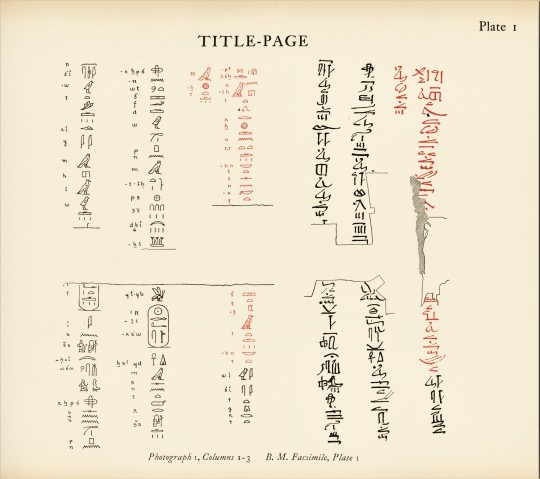
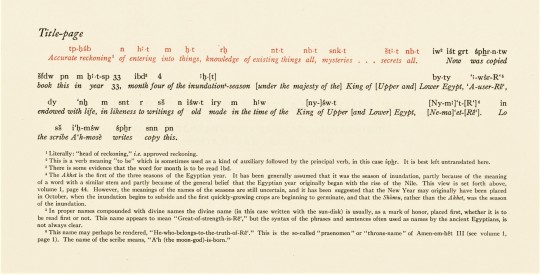



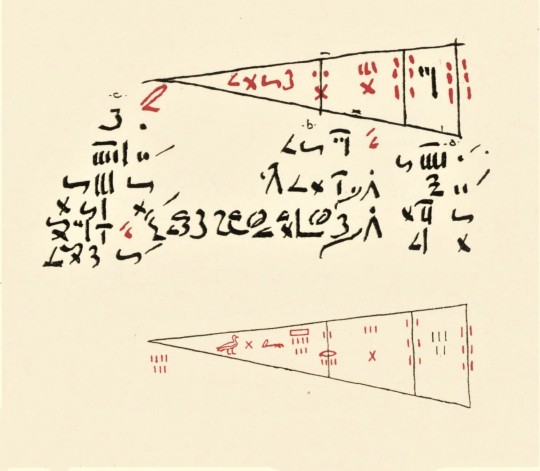



An Egyptian Mathematics Science Saturday
While Archimedes of Syracuse (287-212 BCE) is often considered the first to calculate the value of Pi (π), the Egyptians got pretty darn close a millennium and a half or so earlier, as evidenced by the Rhind Mathematical Papyrus. Copied by the scribe Ahmes sometime around 1650 BCE from an earlier text, the papyrus gives us a remarkable insight not only into Egyptian mathematics but also customs and culture, from taxation and farming practices to the exchange rate between beer and bread. It is named after Scottish antiquarian Alexander Henry Rhind, who acquired the papyrus sometime around 1858. Held by the British Museum since 1865, it is now suspected that the papyrus entered the antiquities market as a result of illegal excavations.
Our facsimile of the papyrus was the result of fifteen years of scholarship by mathematician Arnold Buffum Chace. The first volume was published in Oberlin, Ohio by the Mathematical Association of America in 1927, with the second volume following in 1929. All of the above images are from the second volume, which contains photographs of the papyrus, as well as transcription transliterations and literal translations by Chace. Chace was assisted in his work by mathematician Henry Parker Manning and Egyptologist Ludlow Seguine Bull. Also included in the second volume is a supplement to the “Bibliography of Egyptian Mathematics” from the first volume, both of which were prepared by Raymond Clare Archibald.
The first publication of the Rhind Papyrus was a translation into German in 1877 by August Eisenlohr. The Mathematical Association of America publication was part if a flurry of new scholarship surrounding the papyrus following advancements in scholarly understanding of Egyptian writing. In the preface to our edition, Chace notes the important 1923 translation by Eric Peet published by Liverpool University Press. Chace remarks that “Egyptologists ... will find philological matters fully discussed by Professor Peet,” while he intended for his work to be geared towards both mathematicians and the general public.
Both volumes were originally donated to the Library of the State Teachers College Milwaukee by the Carnegie Corporation of New York with their bookplate.
Check out more Science Saturday posts here.
-Olivia, Special Collections Graduate Intern
#Science Saturday#Rhind Papyrus#Rhind Mathematical Papyrus#Ahmes#Ahmose#Alexander Henry Rhind#Arnold Buffum Chace#Arnold Chace#Mathematical Association of America#Henry Parker Manning#Ludlow Seguine Bull#Raymond Archibald#August Eisenlohr#Eric Peet#Mathematics#Mathematics in Antiquity#Antiquities#Papyrus#olivia
34 notes
·
View notes
Text
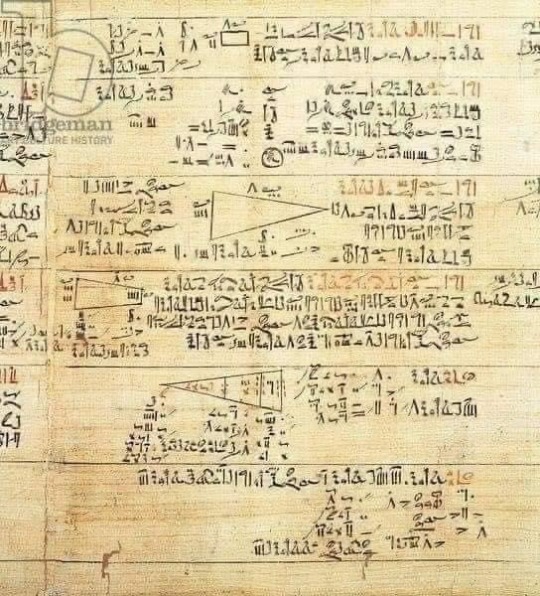
Rhind Mathematical Papyrus - the oldest (1650 BC) manuscript written in Algebra and Irigonometry.
"Rhind Mathematical Papyrus": It is named after Alexander Henry Rhind, a Scottish antiquarian. He bought the papyrus in 1858 in Luxor, Egypt. It was found during illegal excavations in or near the Ramesseum. The Rhind papyrus dates to the Second Intermediate Period of Egypt. It was copied by the scribe Ahmose from a now-lost text from the reign of Amenemhat III (12th dynasty).
The Papyrus is probably a mathematics textbook, used by scribes to learn to solve particular mathematical problems by writing down appropriate examples. The papyrus has work and writing on arithmetic, algebra, geometry, trigonometry, and fractions. Eighty-four problems are included in text covering tables of divisions, multiplication and handling of fractions; and geometry, including volumes and areas.
The scribe dated papyrus in year 33 of Apophis, the penultimate king of the Hyksos 15th Dynasty. The other side of the papyrus mentions 'year 11' without a king's name, but with a reference to the capture of the city of Heliopolis. In the opening paragraphs of the papyrus, Ahmose presents the papyrus as giving "Accurate reckoning for inquiring into things, and the knowledge of all things, mysteries... all secrets". He continues with: This book was copied in regnal year 33, month 4 of Akhet, under the majesty of the King of Upper and Lower Egypt, Awserre, given life, from an ancient copy made in the time of the King of Upper and Lower Egypt Nimaatre (?). The scribe Ahmose writes this copy.
223 notes
·
View notes
Photo

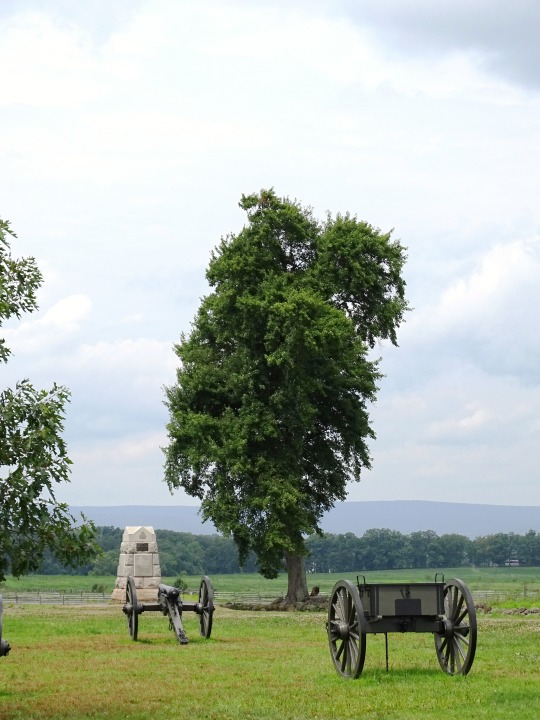

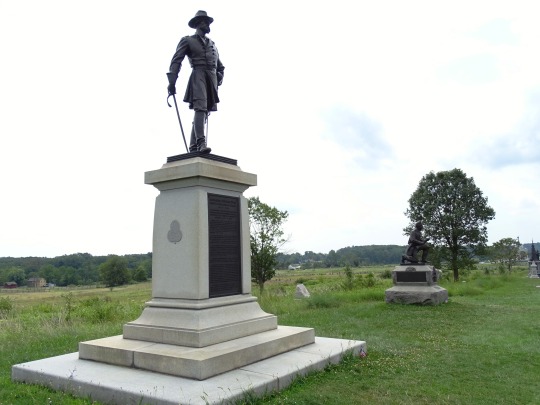






Gettysburg National Military Park (No. 27)
The Angle is the area on the west side of Hancock Avenue defined by the zigzag of a rock wall. It was the focal point of Pickett’s Charge on July 3rd. Here Confederate Brigadier General Armistead led the remnants of his brigade over that wall and briefly broke the Union line, which was restored in hand to hand fighting. The monuments are thickly clustered here.
This is one of the most heavily visited areas on the battlefield, especially in the afternoons during the summer.
Source
The monument to the 1st Pennsylvania Volunteer Cavalry Regiment is south of Gettysburg on Hancock Avenue. A marker for the regiment’s Company H, which operated independently of the main regiment during the Battle of Gettysburg, is located on the east side of Sedgwick Avenue.
Source
#Confederate Brigadier General Lewis Armistead#8th United States Infantry#USA#Hancock Avenue#Gettysburg National Military Park#J. Massey Rhind#nature#Brigadier-General Alexander Stewart Webb#The Angle#Pennsylvania#travel#summer 2019#original photography#US Civil War#American Civil War#landscape#countryside#public art#1st Pennsylvania Cavalry Monument#Henry Jackson Ellicott#cannon#wagon
2 notes
·
View notes
Text
22/7 Egyptian Pi π 3.16 Day July 22nd Golden Circle Ring on it Ring of Fire
Thursday July 22nd 7.22.2021 or 22.7 203rd day; 162 days remain Waxing Gibbus moon. 91%Illumination/ 9% Shadow. 12th day moon
Don't Be Afraid of a little Math.
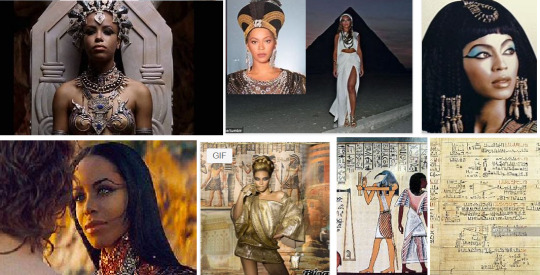


Beyonce said to" Put a Ring on it" and find out if your 22/7 relationship is true. The relationship ship between your inner circle and the distance between it is always true. It is 22 divided by 7.
Whether you want to size your finger for a ring, your head for hat size, neck for a shirt or tie, or box for your delicious pizza, you will find the constant of Pi (Pie, PY).
Over 4 thousand years ago, Ancient Egyptians architects in Africa, built great wonders of the world, still standing today. Mathematical principals written and still remain in Museums.

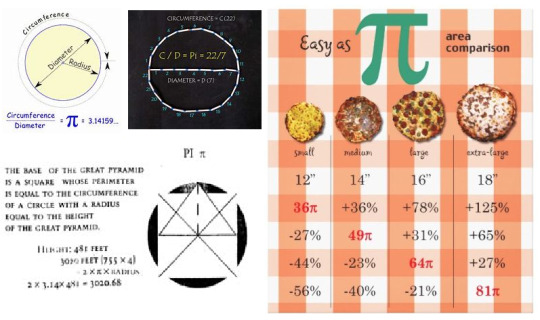
The Ancient Egyptian manuscripts that kept the formulas and blue prints were written on papyrus scrolls. There is one that is named after a thief, Alexander Henry Rhind, a Scottish antiquarian, who purchased the papyrus in 1858 in Luxor, Egypt; it was apparently found during illegal excavations in or near the Ramesseum. It dates to around 1550 BC.
The British Museum, where the majority of papyrus is now kept, acquired it in 1865 along with the Egyptian Mathematical Leather Roll, also owned by Henry Rhind; there are a few small fragments held by the Brooklyn Museum in New York City and an 18 cm central section is missing
The Rhind Mathematical Papyrus is on
4 notes
·
View notes
Photo

The Rhind Mathematical Papyrus is one of the best known examples of ancient Egyptian mathematics. It is named after Alexander Henry Rhind, a Scottish antiquarian, who purchased the papyrus in 1858 in Luxor, Egypt; it was apparently found during illegal excavations in or near the Ramesseum. The Rhind papyrus serves as the foundation of math- ematics today as it includes various mathematical techniques such as proportions, #algebra, volume, and geometry. ... This scribe gives modern learners insight into the advanced #mathematics of the ancient Egyptians, particularly that of Egyptian #geometry #egypt #tourism #travel #mathproblems #geometri #calculus #calculoestrutural #algebra #education #learning #learn #travel #photography #tourism #voyage #teacher #study #studying #architecture #architecturephotography #calculus https://www.instagram.com/p/CS6hTgzI0WA/?utm_medium=tumblr
#algebra#mathematics#geometry#egypt#tourism#travel#mathproblems#geometri#calculus#calculoestrutural#education#learning#learn#photography#voyage#teacher#study#studying#architecture#architecturephotography
0 notes
Text
Hazırlayan ve Kurgu : Hakan Kısa
Rhind Papirüsü…
1858 yılında İskoçyalı antikacı Alexander Henry Rhind tarafından Mısır’da Nil nehrinin Ramesseum yakınındaki Thebes’te bulunmuş ve adını onun soyadından almıştır. Kâtip Ahmes (M.Ö. 1680 – 1620) tarafından yazılan papirüs, 6 metre uzunluğunda ve 35 cm genişliğindedir. 1868 yılından beri British Museum’da sergilenmektedir.
Rhind Papirüsü, dört…

View On WordPress
0 notes
Text
El misterio de la Casa de los niños reales de Egipto
El misterio de la Casa de los niños reales de Egipto
El misterio de la Casa de los niños reales de Egipto A mediados del siglo XIX, un egiptólogo escocés llamado Alexander Henry Rhind hizo un extraordinario y a la vez misterioso descubrimiento mientras estaba investigando en Tebas. Encontró en una zona muy próxima al Valle de los Reyes una antigua tumba con una extraña inscripción: “Casa de los niños reales”. ¿Quiénes eran las mujeres enterradas…
View On WordPress
0 notes